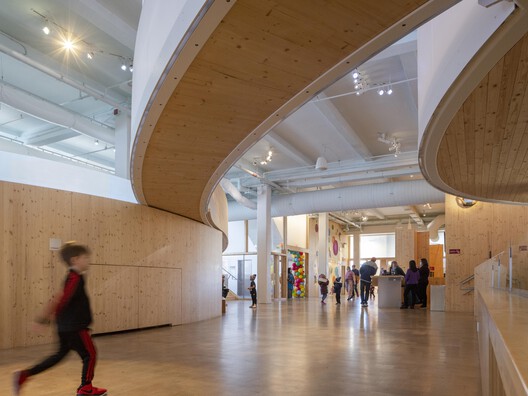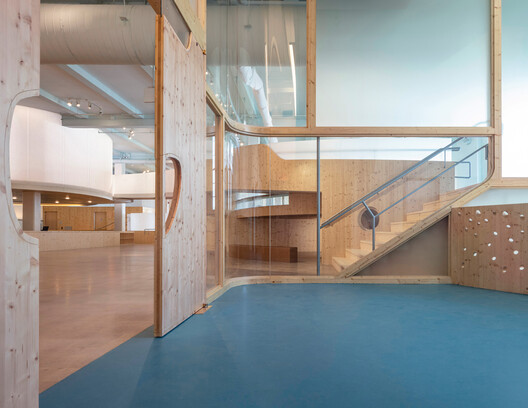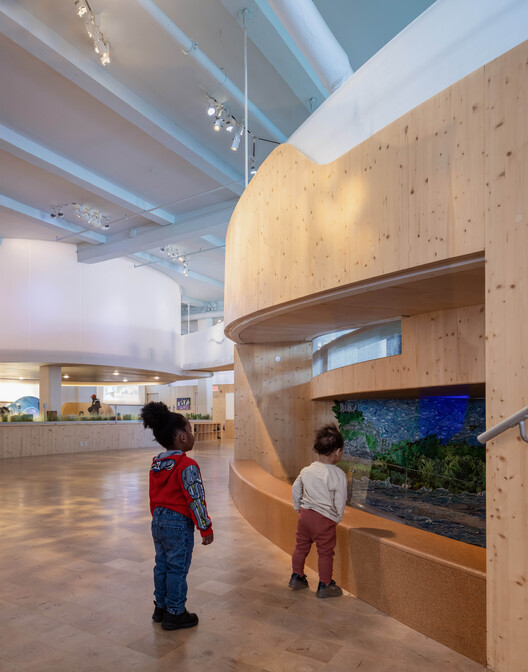
-
Architects: O'Neill McVoy Architects
- Area: 15160 ft²
- Year: 2022
-
Photographs:Paul Warchol

Text description provided by the architects. The Bronx Children’s Museum, founded in 2005, has served thousands of children and adults in the Bronx as a “museum without walls” through its mobile programming. Opened in December 2022, this project is the Museum’s first home and the borough’s first cultural facility for young children, realized with the participation of political representatives and community groups. This welcoming, optimistic, and playful space reflects and supports the mission of the Bronx Children’s Museum of strengthening the community and the environment. By being engaged in the community for several years before designing its home, the Museum gained insights into the community’s diverse nature and needs which directly informed the planning and programming of the space. Rather than starting with a conventional formula for a children’s museum, the Museum’s programming and design started from the unique potential of the kids in this special place, re-envisioning the nature of a children’s museum in the process.

Working closely with the Museum, O’Neill McVoy Architects transformed the raw industrial space into a topological landscape that resonates with a child's conception of space, a geometry uniquely designed from a child's perspective. With the aim to create a 'space for imagination,' the design is inspired by Jean Piaget’s Child’s Conception of Space. Before learning Euclidean space, a child starts building relationships such as proximity and separation, order and enclosure, continuity and openness. The Museum’s design invites children to physically interact with materials and movement in space with the goal of developing awareness of their place in the environment. The design’s spatial flow creates a new kind of space, unlike the city’s cellular rooms and street grids, that connects kids to the experience of the natural landscape and the waterfront.


The Museum is entered via a ground-floor double-height lobby facing the Harlem River. Once on the second-floor visitors are greeted with a tall, light-filled open space with views to the river and the City. The welcome area opens into the main exhibition space, composed of three primary areas including Early Learners, Community Arts and Natural Sciences. Designed from a child’s vantage point, the space feels open and accessible. The movement up and through the space via ramps, delineated by partial height exhibit walls, creates focused areas of interest. Curved wooden and translucent acrylic partitions diverge, reconnect, and spiral to create continuity and separation between spaces. Each successive exhibit area steps up, creating a sense of discovery for the kids. The Waterways exhibit floor is elevated to the windowsills, allowing views of the river outside; the exhibit route spirals up across a bridge to the ‘Cloud’, a performance mezzanine.

O’Neill McVoy Architects explored new techniques for building curving geometry in natural materials. FSC-certified Cross Laminated Timber walls, guardrails, platforms, stairs, benches and doors are digitally fabricated with varying radii arcs to form organic spatial curves, the first use of curved CLT in the U.S. Translucent walls and guardrails are made of recycled acrylic, softer to touch than glass. CLT panels were site-routed to structurally interlock with the acrylic.


















